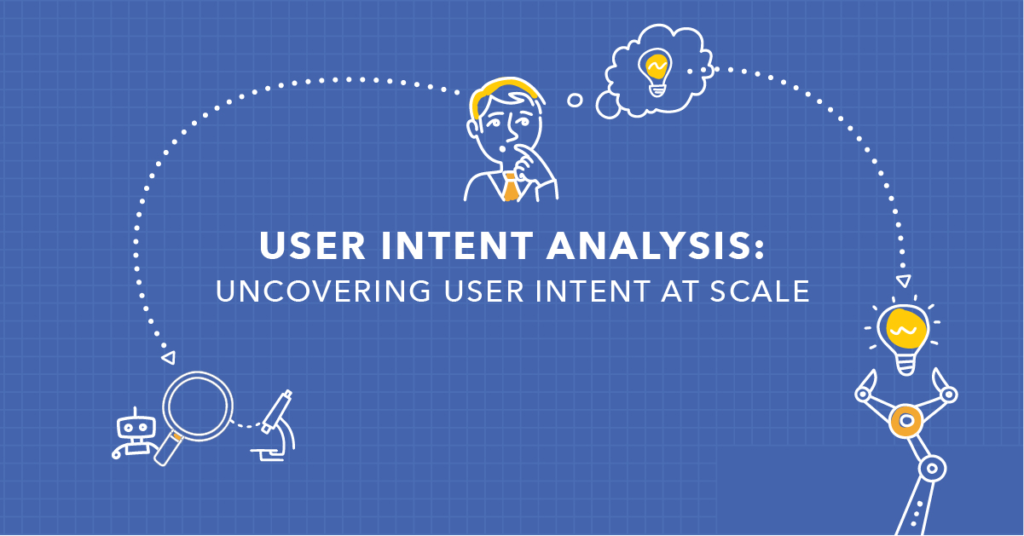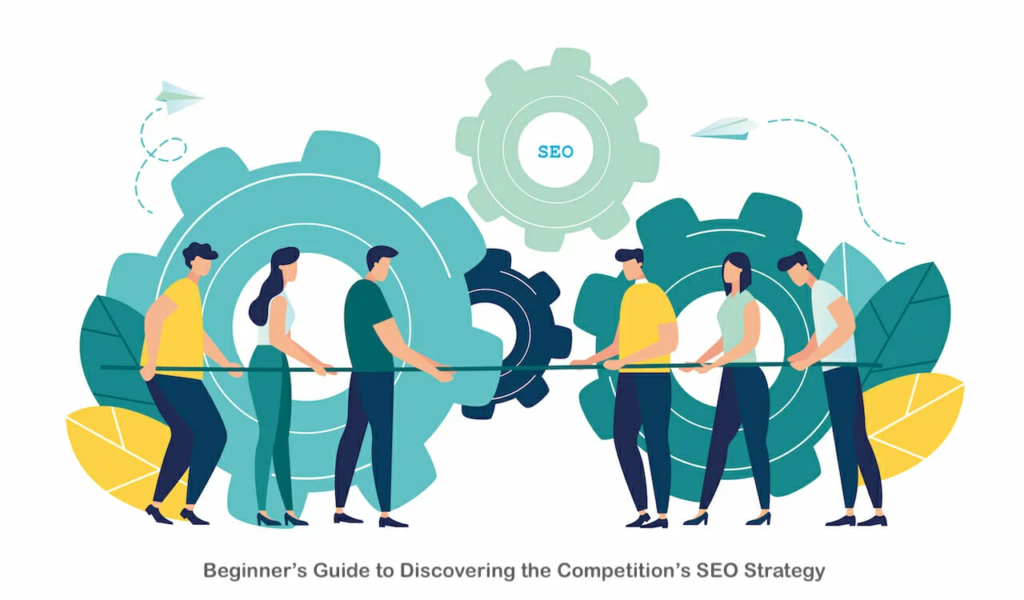In the realm of digital landscapes, where websites compete for attention and visibility, understanding user intent has emerged as a pivotal factor in optimizing search engine rankings. Welcome to an insightful exploration of “The Psychology of SEO: Understanding User Intent,” where we delve into the core concepts of user intent, its significance, and the strategic approach to crafting content that not only resonates but outperforms in search engine rankings.

Unveiling User Intent: Decoding the Searcher’s Mind
User intent, the driving force behind online searches, is the crux upon which successful SEO strategies hinge. It is the art of decoding the searcher’s mind, understanding their needs, wants, and motivations when they enter a query into a search engine. User intent primarily falls into four categories:
- Informational Intent: When users seek information or answers to their queries. Example: “How does photosynthesis work?”
- Navigational Intent: When users are looking for a specific website or online destination. Example: “Facebook login page.”
- Commercial Intent: When users are in the research phase before making a purchase. Example: “Best budget smartphones.”
- Transactional Intent: When users are ready to make a purchase or take a specific action. Example: “Buy iPhone 13 online.”
Understanding these intent categories allows us to align our content with user expectations, resulting in higher engagement, longer dwell times, and ultimately improved search rankings.
Also Check The Art of SEO Copywriting
The Power of Relevant Content: Crafting a User-Centric Experience
To outrank competitors, we must transcend conventional content creation and embark on a journey of crafting user-centric experiences. The secret lies in creating content that resonates with the user’s intent, offering value and relevance. This can be achieved through:
- Thorough Research: Dive deep into the topic to understand all nuances and dimensions related to the user’s query.
- Comprehensive Coverage: Offer comprehensive information that addresses various aspects of the query, leaving no stone unturned.
- Clear Formatting: Present content in a structured manner, using subheadings, bullet points, and visuals for easy consumption.
- Engaging Language: Use a tone and language that speaks directly to the user, establishing a connection.

The SEO Game Plan: Strategically Outranking the Competition
To outrank the article titled “The Psychology of SEO: Understanding User Intent,” our strategy involves combining the principles of user intent with technical SEO excellence:
1. Keyword Optimization
Integrate target keywords strategically within the content, focusing on natural placement that enhances readability.
2. Semantic SEO
Leverage semantic SEO by incorporating related keywords and phrases to provide a comprehensive understanding of the topic.
3. Quality Backlinks
Secure high-quality backlinks from authoritative sources within the industry to signal credibility to search engines.
4. Page Speed and Mobile Optimization
Ensure the website loads swiftly and is optimized for mobile devices, enhancing user experience and search engine rankings.
5. Rich Media Integration
Incorporate images, infographics, and even videos to enrich the content and engage users effectively.

Elevating User Experience: A Holistic Approach to SEO Dominance
In the dynamic realm of online engagement, where user experience reigns supreme, mastering the intricacies of user intent is not just a strategy—it’s an imperative. We present a comprehensive guide to conquering search engine rankings with an unparallelled understanding of user intent, leaving no room for uncertainty or guesswork.
Deciphering User Intent: The Essence of Engagement
User intent isn’t just a buzzword; it’s the very essence of every online interaction. It’s the catalyst that propels users from search engines to your digital doorstep. Decoding user intent requires finesse and a keen understanding of their underlying motivations. We categorize user intent into four distinct dimensions:
- Informational Intent: Satisfy users seeking knowledge and insights.
- Navigational Intent: Facilitate users looking for specific online destinations.
- Commercial Intent: Guide users in their purchase research journey.
- Transactional Intent: Seal the deal with users ready to take action.
Each intent dimension presents an opportunity to resonate deeply and cater to diverse user needs. With this understanding, you lay the foundation for an exceptional user experience.
The Alchemy of Content: Crafting Value-Rich Experiences
Outranking competition isn’t a mere ambition; it’s a pursuit guided by content that captivates and educates. Crafting such content requires an alchemical blend of meticulous planning, strategic insight, and creative finesse:
- Research Mastery: Immersion in the subject matter elevates your grasp, enabling comprehensive coverage.
- Engagement Architecture: Employ a clear hierarchy with subheadings, enabling easy navigation and enhancing engagement.
- Visual Storytelling: Images, diagrams, and infographics augment the narrative, ensuring visual learners are catered to.

The Strategic Symphony: Conquering SEO with User Intent
To outperform your competitors, a symphony of strategic maneuvers is essential, harmonizing with the melody of user intent:
1. Harmonious Keyword Integration
Embrace keywords that seamlessly integrate with the content, enhancing relevance without disrupting the flow.
2. Semantic Brilliance
Augment your content’s semantic prowess with related keywords, expanding the content’s contextual richness.
3. Eminence in Backlinks
Forge relationships with authoritative domains, amassing backlinks that proclaim your content’s worth to search engines.
4. Speed and Responsiveness
A swift website, optimized for both desktop and mobile, not only delights users but entices search engines.
5. Multimedia Symphony
Enrich the content experience with a multimedia ensemble—images, videos, and interactive elements—for greater resonance.

Elevating User Experience: A Holistic Approach to SEO Mastery
In the ever-evolving landscape of online engagement, where user experience is paramount, mastering the intricacies of user intent isn’t just a strategy – it’s a necessity. Here, we present an exhaustive guide to not only understanding user intent but leveraging it to secure a commanding position in search engine rankings.
Unveiling User Intent: The Key to Unleashing SEO Potential
The core of effective SEO lies in deciphering user intent, the driving force behind every online query. User intent encapsulates the user’s underlying purpose when initiating a search, and it can be classified into four main categories:
- Informational Intent: Users seeking answers, explanations, or information.
- Navigational Intent: Users aiming to find a specific website or online location.
- Commercial Intent: Users in the research phase before making a purchase decision.
- Transactional Intent: Users ready to take action, such as making a purchase or signing up.
Understanding these intent categories forms the bedrock of a successful SEO strategy, enabling you to tailor your content to match user expectations effectively.

The Art of Crafted Content: Forging Connections through Value
Outranking competitors requires more than just keyword optimization; it demands crafting content that forges a genuine connection with users. Achieving this level of engagement hinges on several crucial aspects:
- In-Depth Research: Delve deep into the topic, leaving no stone unturned. Comprehensive research is the cornerstone of valuable content.
- Structural Precision: Organize content with clear subheadings that guide users through the material, enhancing readability.
- Engaging Language: Use a tone that resonates with your target audience, establishing a rapport and fostering trust.
Strategic Maneuvers: Surpassing Competitors through SEO Finesse
To rise above the competition, a strategic approach is imperative. Let’s delve into the key maneuvers that will propel your content to the forefront of search engine rankings:
1. Strategic Keyword Integration
Incorporate target keywords seamlessly, avoiding overuse while ensuring they naturally fit within the context.
2. Semantic Enrichment
Expand your content’s relevance by including related keywords that provide a comprehensive perspective on the topic.
3. Authority Backlinks
Forge connections with authoritative websites, securing quality backlinks that validate your content’s credibility.
4. Optimized Performance
Enhance your website’s speed and responsiveness, providing users with a seamless browsing experience across devices.
5. Visual Augmentation
Integrate visual aids such as images, diagrams, and videos to augment your content’s appeal and engagement.

Conclusion: Shaping SEO Triumph through User Intent Precision
In the grand tapestry of digital conquest, user intent stands as the pivotal thread. Achieving dominance in search engine rankings necessitates weaving content that aligns with users’ desires and aspirations. As you traverse this journey, remember that SEO excellence isn’t just about algorithms; it’s about recognizing the human element and addressing it comprehensively. By crafting content that resonates with users on a profound level, you establish an unassailable stronghold in the realm of online visibility.
FAQ: Unveiling the Psychology of SEO and User Intent
Welcome to the FAQ section, where we address your burning questions about the dynamic intersection of SEO and user intent. Here, we aim to provide clarity and insight into this intricate realm, allowing you to harness its potential for optimal online success.
Q1: What is user intent, and why is it crucial for SEO?
A: User intent refers to the underlying motivation behind a user’s search query. It’s essential for SEO because understanding user intent helps tailor content to match what users are looking for, leading to higher engagement, longer dwell times, and improved search engine rankings.
Q2: How do I categorize different types of user intent?
A: User intent can be categorized into four main types: informational intent (seeking knowledge), navigational intent (looking for a specific website), commercial intent (researching products/services), and transactional intent (ready to take action). Each type guides content creation to fulfill user needs effectively.
Q3: How can I craft content that resonates with user intent?
A: Crafting resonant content involves in-depth research, comprehensive coverage, clear formatting with subheadings, and engaging language. By aligning your content with user intent, you provide value and relevance, enhancing the user experience.
Q4: What strategies can I employ to outrank competitors in search engine rankings?
A: To surpass competitors, focus on keyword optimization, semantic SEO by incorporating related keywords, securing quality backlinks, optimizing page speed and mobile responsiveness, and integrating rich media such as images and videos to enhance user engagement.
Q5: How does semantic SEO contribute to better search rankings?
A: Semantic SEO involves using related keywords and phrases to create a more comprehensive understanding of the topic. This not only provides a deeper context for users but also signals to search engines that your content covers a broader spectrum, potentially improving rankings.
Q6: What role do backlinks play in SEO success?
A: Backlinks are external links pointing to your website from other authoritative sites. They serve as endorsements of your content’s credibility and relevance, which search engines consider when determining your website’s ranking.
Q7: How can I ensure a mobile-friendly website for better rankings?
A: Optimizing your website for mobile devices is crucial. Ensure responsive design, fast loading times, easy navigation, and a seamless browsing experience on smartphones and tablets.
Q8: Can visual elements like images and diagrams impact SEO?
A: Yes, visual elements enhance user experience and engagement, which can indirectly impact SEO. When users spend more time on your page due to compelling visuals, it signals to search engines that your content is valuable and relevant.
Q9: Is there a specific keyword density I should target for optimal SEO?
A: Rather than fixating on keyword density, focus on natural and meaningful integration of keywords within your content. The emphasis should be on providing value to the reader while maintaining keyword relevance.
Q10: How can I gauge the effectiveness of my SEO efforts related to user intent?
A: Monitor key metrics such as organic traffic, bounce rate, dwell time, and conversion rates. These metrics can provide insights into how well your content aligns with user intent and how it affects user behavior.
Remember, the dynamic landscape of SEO and user intent continually evolves. Adapting and refining your strategies based on user behavior and algorithm updates is crucial for sustained success in outranking competitors and establishing a robust online presence.

